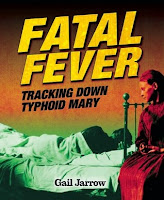 Tommy: The Gun That Changed America
Tommy: The Gun That Changed America by Karen Blumenthal
Roaring Brook Press
On shelves June 30, 2015
Grades 6-12
The reviewer received an electronic galley from the publisher.
Karen Blumenthal, author of Bootleg: Murder, Moonshine and the Lawless Years of Prohibition, has written another intriguing history story for teens. In Tommy: The Gun That Changed America, Blumenthal traces the history of the Thompson machine gun from the conception of the idea by John Thompson just after World War I to the design of the weapon by Oscar Payne followed by its rise as a deadly weapon used on the streets by notorious gangsters. At the time, it was a huge improvement over the heavy, unreliable Chauchat rifles issued to soldiers during the Great War. Unfortunately, the Thompson machine gun wasn't purchased in bulk by the U.S. military and instead was smuggled into the hands of gangsters, sold to military groups in other countries, and became available in sporting good stores across the country.
The fast-paced narrative weaves together stories of smugglers, the formation of the U.S. Bureau of Investigation (FBI), the Irish Republican Army, gangsters, FDR's New Deal, labor unions and the U.S. Constitution. Despite the many subplots, the narrative remains focused on the thesis: how the Tommy gun had an impact on our society and laws governing firearms. Many chapters end with a cliff hanger or with an interesting fact that leads into the next chapter. Numerous black and white photographs, advertisements, and newspaper clippings are placed thoughtfully throughout the book. The lengthy bibliography and detailed source notes show that Blumenthal spent a great deal of time researching this topic.
Even though the Tommy gun is no longer in circulation, it had a lasting effect on our country and the gun control debate. The book contains a strong authorial voice, at times I felt like I was having a conversation with the author. Yet, Blumenthal does not put her own views into the story, she presents readers with information from all sides of the issues. The last chapter of the book focuses on the issue of gun control versus the right the bear arms. Readers are asked to consider what they think is right: the safety of the community or individual rights. This is a powerful and interesting read for history fans and would make an excellent book to share in middle school or high school history classes.
Read an excerpt from the book on the publisher's site.























